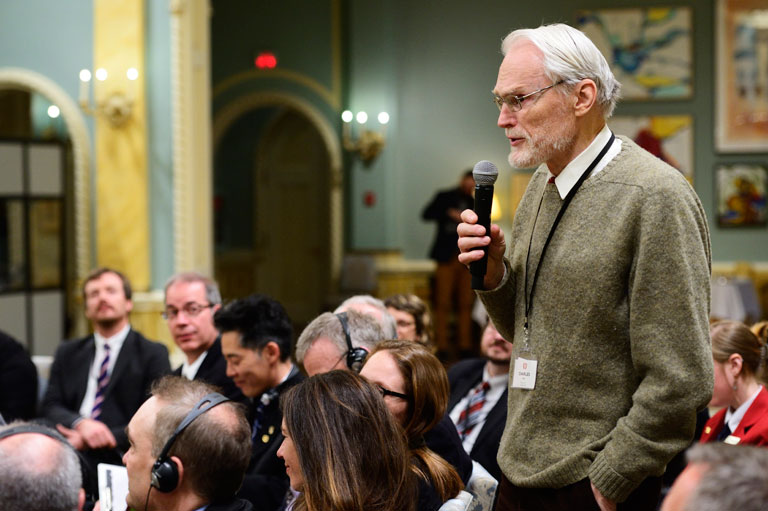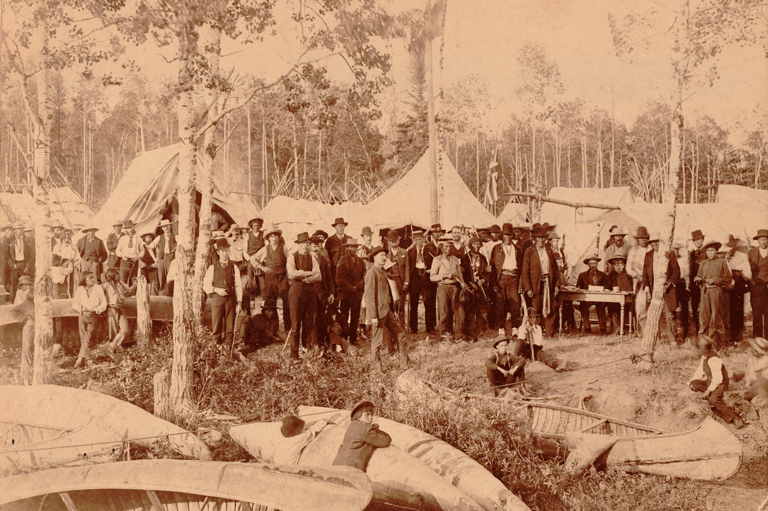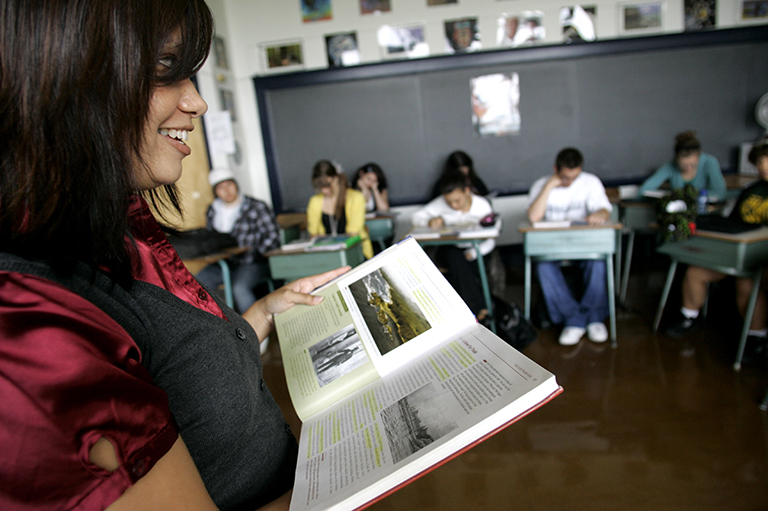Thérèse Casgrain: Canadian Political and Peace Activist
Grade Levels: 5/6, 7/8, 9/10
Subject Area: Social Studies/History/Civics
This lesson is inspired by the article “Equality for All” in the Great Canadian Women issue of Kayak: Canada’s History Magazine for Kids.
Lesson Overview
Students will work in groups to explore the historical experiences of Thérèse Casgrain and the women activists who created political, cultural, and social change in Quebec and Canada. Students will use the historical thinking concepts of cause and consequence as well as historical significance to analyze the ways Quebec women mobilized to make change in Quebec, in Canada, and globally.
Time Required
Two classes
Historical Thinking Concept(s)
- Establish historical significance
- Use primary source evidence
- Identify continuity and change
- Analyze cause and consequence
Learning Outcomes
Student will:
- Inquiry: use the social studies inquiry process to investigate Canadian social, political, economic and/or environmental issues from various perspectives and the level of government responsible for addressing the issues
- Collect: collect historical data, draw conclusions, and reflect on the meaning and impact of the historical data
- Analyze: use multiple documents, images, quotes and statistics to gather data about the historical experiences of Thérèse Casgrain and other women activists and leaders in Canada
- Understand: demonstrate an understanding of the roles and key responsibilities of citizens and of the different levels of government in Canada, including collaboration and cooperation, decision making, respect, rights and responsibilities, and stewardship.
- Communicate and apply: compare citizen and government actions in the past to citizen and government actions today
Background Information
- Thérèse Casgrain née Marie Thérèse Forget (July 10, 1896 – November 3, 1981) was the first woman head of a political party in Quebec. She was born in Montreal, and was a leader in shaping rights for women; including the right to vote, the right to hold political office, and the right to refuse forced retirement. Casgrain was also a peace activist.
- In 1946, Thérèse Casgrain joined the Cooperative Commonwealth Federation (CCF) and in 1948, she was chosen as one of the national vice-chairpersons of the CCF Party. When elected leader of the Quebec wing in 1951, she became the first woman to head a political party in Quebec. She served as provincial leader three times until 1957. In 1955, the provincial party name was changed to Le Parti social démocratique du Québec in order to more clearly indicate its objectives. Thérèse Casgrain later became president of the New Democratic Party (NDP) in Quebec, the strong labour-based party that evolved out of the CCF.
- In 1961 she founded the Quebec Branch, Voix des femmes, of the national organization The Voice of Women, one of Canada's oldest national feminist peace groups, which continues today to advocate for global peace. Canada boosts a long historic tradition of war resistance and The Voice of Women/ Voix des femmes has played a leadership role in advocating for peace and opposing nuclear proliferation.
- Casgrain was active politically, advocating for a better society and world and as a founding member of the Quebec provincial Franchise Committee, later the League for the Rights of Women. She was appointed to the Senate in 1970.
- Casgrain was the recipient of the Order of the British Empire (O.B.E.); Officer of the Order of Canada (O.C.), 1967; Companion of the Order of Canada (C.C.), 1974
The Lesson Activity
Activating: How will students be prepared for learning?
Critical thinking question: In what ways did Thérèse Casgrain help establish Canada as a peace keeping nation?
Acquiring: What strategies facilitate learning for groups and individuals?
- There are four tables and four groups of students for this lesson. Students will get into groups and each group will explore a different set of historical documents including images, charts, and statistics provided at their table. (These documents can be explored in hard copies or on a digital device/links to google docs or prezi for online work.)
- Students in each group will fill in their data collection sheets that provide an opportunity for students to record what they see in the documents as well as do some preliminary analysis of each of the documents in order to better understand the life of Thérèse Casgrain; Quebec and Canadian history.
- After 15 minutes, each group will move to the next desk of documents. They will add to their data collection sheet, each time collecting data as well as performing analysis.
- The data collection sheet has a space for students to collect information about each of the documents on their table as well as to reflect on the historical thinking concepts of historical significance and cause and consequence.
Applying: How will students demonstrate their understanding?
- Students in each of the groups will be given a sticky note, and based on the research they did the lesson before, they will place their sticky notes on the paper which they feel best describes the activism of Thérèse Casgrain.
- In this way they are making decision about historical significance, using their research data collected to draw a conclusion about her leadership and its impact on women, Quebec and Canada.
- After all students have filled in their data collection sheets, they will draw conclusions about the life of Thérèse Casgrain and attempt to answer the critical question: In what ways did Thérèse Casgrain help establish Canada as a peace keeping nation?
Acquiring: What strategies facilitate learning for groups and individuals?
- The teacher will use the Quotes taken from speeches of Thérèse Casgrain and other members of the VOW, who spoke publicly in radio shows, newspapers and in parliament and post them in the classroom or online. Students will write the quotes on pieces of chart paper. The chart paper will be placed on the four group tables.
- Students will read the quotes, highlight the key words, and discuss their meaning.
Applying: How will students demonstrate their understanding?
- Students will take the key words they pulled from the quotes and create a peace poster, banner, or button that might have been used when Thérèse Casgrain and other peace activists were protesting against war in the past. Students will consider how the posters, banners or buttons could also be used today. (cause and consequence, continuity and change)
- A word board will be used to share all the messages collected from the quotes.
- Students will reflect on the ways citizens in the past advocated for change through common messages, and the ways in which words today have changed or stayed the same. Students will reflect on new challenges and concerns citizens face today.
- Students will share their posters, banners and buttons with each other and reflect on citizen activism for change, past and present. (continuity and change) Classes may decide to share their peace messages throughout the school.
- After all students have presented their posters, banners, and/or buttons, they will draw conclusions about the life of Thérèse Casgrain and other citizens to advocate for change. This may include writing letters to members of parliament about Canada as a peace keeping nation
Materials/Resources
- Paper, markers, digital devices, chart paper, sticky notes
- Historic Quotes
- Historic Newspaper Documents
- Historical Images
- Data Collection and Interpretation Sheet
- Assessment
Themes associated with this article
Advertisement




